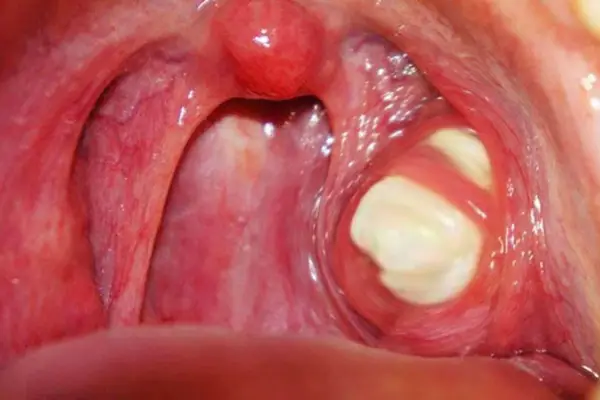Beer line cleaners, essential for keeping draft beer systems clean, come in several forms. Commonly used caustic cleaners contain powerful substances like sodium hydroxide and sodium hypochlorite, ideal for tackling tough residues. A milder alternative, stabilized hydrogen peroxide cleaners, which include silver ions, are often used as well. Surfactant-based cleaners, a less common choice, mix sodium hydroxide with surfactants like alkyl polyglucosides (APG) or benzalkonium chloride (BAC). Each type is crucial for keeping beer lines clean and ensuring the beer’s quality.
The danger of ingesting any beer line cleaner depends on its chemical constituents, their and the amount ingested concentration. Even at lower concentrations, substances like sodium hydroxide pose a severe risk due to their corrosive properties.
In the event of accidental ingestion, immediate medical attention is vital. Rinse your mouth gently with water, which can help in diluting the cleaner. If feasible, sipping a small amount of water can further help in diluting the substance in the stomach, but this should be done cautiously.
Immediately seek medical assistance, contacting emergency services or heading to the nearest hospital. Provide the medical team with as much information as possible about the cleaner, particularly its concentration and active ingredients, to enable prompt and appropriate treatment. This quick response is crucial in managing the risks associated with such incidents.
Dangers Of The Ingestion Of Various Types Of Beer Line Cleaners
When addressing accidental ingestion of beer line cleaners, the foremost step is understanding their chemical composition, as this knowledge is critical for effective treatment. These cleaners, integral to the maintenance of beer dispensing systems, contain a variety of chemicals at varying concentrations.
The concentration levels are a key factor in determining the potential hazards of these substances. While lower concentrations might present minimal risks, higher concentrations can be significantly more dangerous. In the following sections, we’ll delve into the dangers associated with different types of beer line cleaners
Caustic/Chlorinated Cleaner
Sodium Hydroxide (NaOH) Or Potassium Hydroxide (KOH):
These chemicals, commonly referred to as caustic soda and caustic potash, are strong bases and exhibit highly corrosive properties. Upon accidental ingestion, they pose serious health risks. The primary concern is the corrosive damage they can inflict upon contact with biological tissues. This corrosive action can result in severe chemical burns to the mouth, throat, esophagus, and stomach. The symptoms of such ingestion include intense pain, swelling, redness, and blistering of the affected areas. In severe cases, the ingestion of these substances can lead to perforation of the gastrointestinal tract, which is a life-threatening condition requiring immediate medical intervention.
In addition to the corrosive damage, the ingestion of these substances can lead to systemic effects. These might include a severe drop in blood pressure, shock, and in extreme cases, can compromise the respiratory system. Long-term consequences might include strictures in the esophagus due to scar tissue formation, which can lead to difficulty in swallowing and require surgical intervention.
Sodium Hypochlorite (NaClO):
Sodium hypochlorite, often used in combination with NaOH or KOH in chlorinated cleaners, is an oxidizing agent and is the active ingredient in many bleach products. When ingested, it reacts with the acidic environment of the stomach, potentially releasing chlorine gas. This gas is highly irritating to the mucous membranes and can cause respiratory distress, coughing, and shortness of breath. Moreover, the ingestion of sodium hypochlorite can cause severe irritation and burns to the gastrointestinal tract. The symptoms might include severe abdominal pain, vomiting, and diarrhea, which may be bloody if the lining of the intestines is damaged. Ingesting high concentrations can lead to more severe complications, including systemic toxicity that affects multiple organs and can result in long-term health issues or fatality.
Stabilized Hydrogen Peroxide
Hydrogen Peroxide (H2O2):
Stabilized hydrogen peroxide used in line cleaners, particularly at high concentrations, is a potent oxidizing agent. If ingested, it can cause significant harm. The primary mechanism of injury is the release of oxygen upon contact with the organic tissue, which can lead to mechanical distension and rupture of the gastrointestinal tract. Symptoms of ingestion include abdominal pain, vomiting, and bloating. In severe cases, the rapid release of oxygen can result in gastric perforation, a medical emergency that requires immediate surgical intervention.
Furthermore, hydrogen peroxide can cause oxidative damage to the mucosal lining of the gastrointestinal tract, leading to ulcers and bleeding. If absorbed into the bloodstream, it can lead to systemic oxidative stress, affecting red blood cells and leading to hemolysis (destruction of red blood cells), which can result in anemia and renal failure due to the high load of hemoglobin being filtered by the kidneys.
Silver Additives:
The use of silver in these cleaners serves as a stabilizer and antimicrobial agent. While silver in small amounts generally has low toxicity, chronic or large-volume ingestion can lead to a condition known as argyria, characterized by a bluish-gray discoloration of the skin, eyes, and internal organs. This discoloration is caused by the accumulation of silver particles in the body and is usually permanent. Moreover, the toxic effects of silver on the liver and kidneys can be a concern, especially in cases of large-volume ingestion or chronic exposure.
Surfactant-Based Cleaners
Sodium Hydroxide (NaOH) and Potassium Hydroxide (KOH):
As previously discussed, NaOH and KOH are strong alkalis that can cause serious chemical burns upon ingestion. These burns can affect the mouth, throat, esophagus, and stomach, leading to intense pain, difficulty in swallowing, and potential perforation of esophagus and stomach. These chemicals can also have systemic effects, including blood pressure changes and respiratory problems. Immediate medical attention is essential in such cases to prevent long-term complications.
Alkyl Polyglucosides:
These are milder surfactants derived from natural sources. In cases of ingestion, they are less likely to cause severe harm compared to stronger alkaline substances like NaOH or KOH. However, they can still induce gastrointestinal discomfort, nausea, and vomiting. The risk associated with alkyl polyglucosides is relatively lower, but caution should still be exercised to avoid accidental ingestion.
Benzalkonium Chloride:
This compound is an effective antimicrobial agent used in various cleaning products. Despite its efficacy in cleaning, benzalkonium chloride is harmful if ingested. It can cause irritation to the gastrointestinal tract, leading to symptoms like nausea and abdominal pain. In higher concentrations, it poses a risk of causing more severe symptoms, including respiratory distress and seizures. Prompt medical treatment is crucial in cases of significant exposure to mitigate these risks.
KMnO4 or Other Dye Additives
Potassium Permanganate (KMnO4):
KMnO4 is not a type of beer cleaner but it is added to the cleaner as a color indicator to detect the level of biological contaminants. If ingested, it can cause significant harm due to its corrosive nature. The primary concern is the potential for burns and irritation to the mouth, esophagus, and stomach.
First Aid for Accidental Ingestion of Beer Line Cleaners
In the event of beer line cleaner ingestion, start by rinsing the mouth to remove any residue. This can help reduce irritation in the mouth and throat. If the individual can swallow and is conscious, encourage them to drink small amounts of water. This step helps dilute the chemical internally and can be beneficial in lessening its harmful effects.
The next critical action is to call emergency services or a poison control helpline immediately. Their guidance is essential for such a situation. It’s important to avoid inducing vomiting, as this can cause more damage, especially if the cleaner is caustic. Try to gather information about the cleaner, such as its type and the quantity you’ve ingested as this will be invaluable to healthcare professionals for providing you with the best possible care.
Treatment for Line Cleaner Poisoning
Upon arrival at a medical facility, the treatment plan will likely include:
- Dilution: This may involve further dilution of the ingested substance under medical supervision.
- Diagnostic Tests: Blood and urine tests, a chest X-ray, and an ECG might be conducted to assess internal damage and the effects on organ systems.
- Endoscopy: To evaluate the extent of damage to the esophagus and stomach.
- Intravenous Fluids (IV): For hydration and possibly to administer medications.
- Medications: Pain relievers, anti-nausea medications, and others as needed for symptom relief and to protect the gastrointestinal tract.
- Observation and Supportive Care: Continuous monitoring is essential for managing symptoms and preventing complications.
Outlook (Prognosis)
The prognosis depends on the type and amount of cleaner ingested, the speed of medical intervention, and the individual’s overall health. Early and effective treatment can improve the outcome significantly. However, there is a risk of long-term complications, such as esophageal damage, which may require ongoing medical attention. The key in such situations is the speed and appropriateness of the initial response and subsequent medical care.





